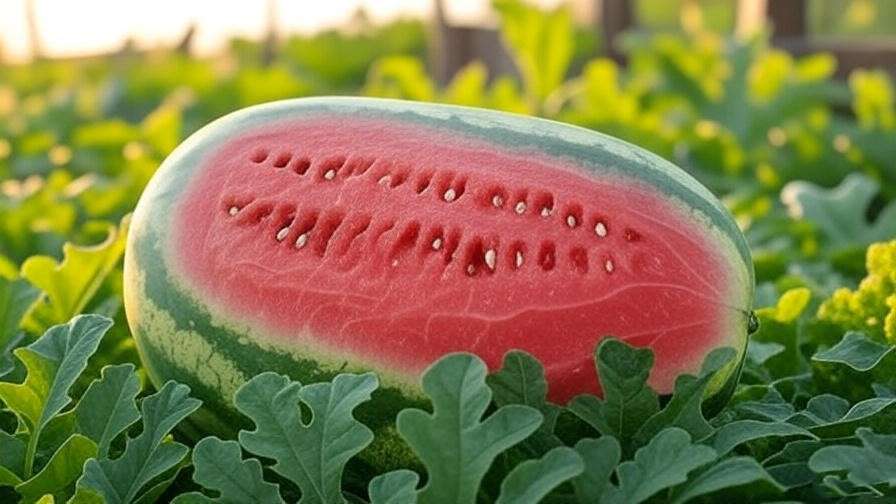Picture this: It’s a sweltering summer afternoon, and you slice into a perfectly ripe Crimson Sweet watermelon, its vibrant red flesh dripping with sweet, refreshing juice. The first bite is pure bliss—a burst of flavor that makes every moment of gardening effort worthwhile. Growing Crimson Sweet watermelon in your own backyard is not only achievable but also deeply rewarding. Whether you’re a novice gardener or a seasoned green thumb, this guide will equip you with expert tips to cultivate this beloved variety, known for its crisp texture and delectable sweetness. With the right care, you can harvest plump, juicy watermelons that rival any store-bought fruit. Backed by decades of horticultural expertise, this comprehensive guide walks you through every step to ensure a bountiful harvest.
Understanding the Crimson Sweet Watermelon
What Makes Crimson Sweet Watermelon Special?
The Crimson Sweet watermelon, a favorite among gardeners, is celebrated for its large, oblong fruits, typically weighing 15–25 pounds. Its distinctive green rind with dark stripes encases a vibrant, red-tinged flesh that’s exceptionally sweet and crisp. Developed in the 1960s, this heirloom variety has become a staple in home gardens and markets due to its reliable growth and exceptional flavor. Beyond its taste, Crimson Sweet is packed with nutrients like vitamins A and C, making it a healthy addition to summer salads, smoothies, or simply enjoyed fresh. Its versatility and robust growth make it ideal for both beginners and experienced growers.
Ideal Growing Conditions for Crimson Sweet Watermelon
To thrive, Crimson Sweet watermelons demand warm, sunny conditions. They flourish in temperatures between 70–85°F, requiring a growing season of at least 80–85 days. The soil should be well-drained, ideally sandy loam with a pH of 6.0–6.8, to support healthy root development. Full sun exposure for 8–10 hours daily is non-negotiable, as watermelons are sun-loving plants. Additionally, their sprawling vines need ample space—plan for 6–8 feet between rows and 3–4 feet between plants. Proper site selection sets the foundation for a successful harvest.
Preparing to Grow Crimson Sweet Watermelon
Choosing the Right Location
Selecting the perfect spot is critical for growing healthy Crimson Sweet watermelons. Choose a location with maximum sunlight and good air circulation to reduce disease risk. Avoid low-lying areas where water pools, as poor drainage can lead to root rot. Crop rotation is key—don’t plant watermelons where other cucurbits (like cucumbers or squash) grew in the past two years to prevent soil-borne diseases. For small gardens, consider raised beds or mounds to improve drainage and control vine sprawl.
Soil Preparation and Fertilization
Healthy soil is the backbone of a thriving watermelon crop. Start by testing your soil’s pH and nutrient levels using a home testing kit or local extension service. Amend the soil with organic matter like compost or well-rotted manure to boost fertility and improve texture. For optimal growth, incorporate a balanced fertilizer (e.g., 10-10-10) before planting, followed by a nitrogen-rich fertilizer during early growth and phosphorus-heavy fertilizer during fruiting. Expert Tip: Mix in aged manure 4–6 weeks before planting to enhance soil structure and nutrient availability.
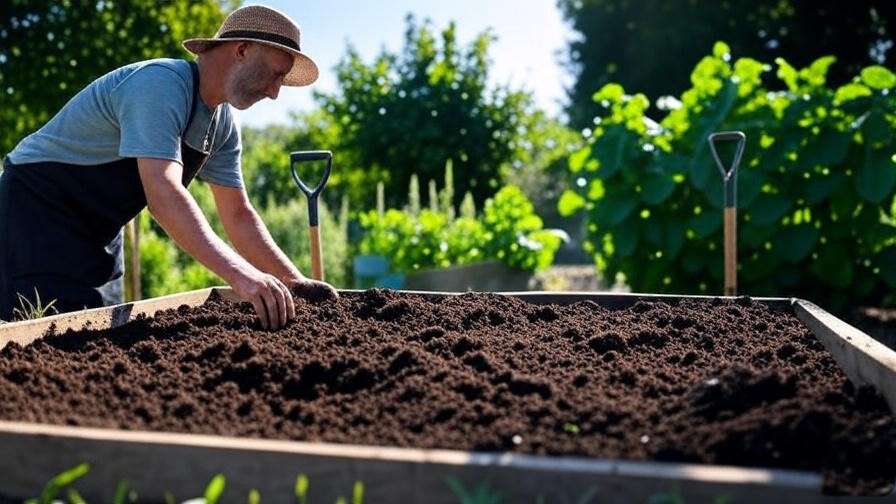
Selecting Quality Seeds or Seedlings
High-quality seeds are essential for a successful harvest. Purchase Crimson Sweet watermelon seeds from reputable suppliers like Burpee or Johnny’s Selected Seeds to ensure genetic purity and germination rates. If starting from seeds, check viability by soaking a few in water—viable seeds sink, while non-viable ones float. Alternatively, use healthy seedlings from a trusted nursery for faster establishment, especially in shorter growing seasons. Weigh the pros and cons: seeds are cost-effective but require more time, while transplants offer a head start but may be pricier.
Planting Crimson Sweet Watermelon
When and How to Plant
Timing is everything when planting Crimson Sweet watermelons. Wait until after the last frost, when soil temperatures reach at least 70°F, to sow seeds or transplant seedlings. In most regions, this is late spring to early summer. For direct sowing, plant seeds 1 inch deep in groups of 2–3, spacing them 3–4 feet apart in rows 6–8 feet apart. If starting indoors, begin 3–4 weeks before the last frost and transplant carefully to avoid root disturbance. Thin seedlings to the strongest plant per hill once they establish.
Watering and Mulching Techniques
Proper watering and mulching set the stage for vigorous growth. Water deeply after planting to settle the soil, then maintain consistent moisture without waterlogging. Apply organic mulch, such as straw or wood chips, to retain soil moisture, suppress weeds, and regulate soil temperature. A 2–3-inch layer of mulch works wonders. Expert Insight: Consider installing a drip irrigation system to deliver water directly to the root zone, minimizing waste and reducing the risk of fungal diseases.
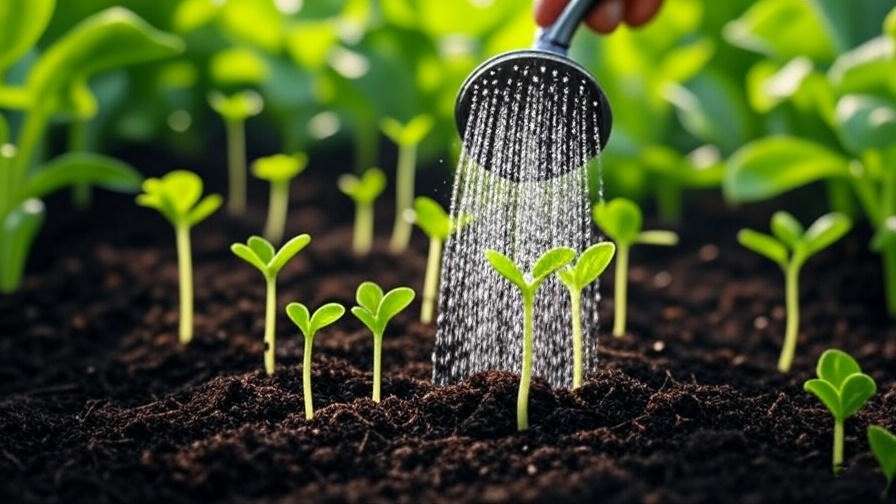
Caring for Crimson Sweet Watermelon Plants
Watering Requirements
Watermelons are thirsty plants, but balance is key. Provide 1–2 inches of water per week, focusing on deep, infrequent watering to encourage strong root systems. During hot, dry spells, increase frequency slightly, ensuring the soil stays moist but not soggy. Overwatering can lead to root rot, while underwatering causes small, underdeveloped fruits. Adjust watering during flowering and fruiting—reduce slightly during flowering to avoid blossom drop, then increase as fruits develop to support their high water content.
Fertilizing for Optimal Growth
A strategic fertilization plan fuels healthy vines and plump fruits. Apply a nitrogen-rich fertilizer (e.g., 5-10-10) every 2–3 weeks during the vegetative growth phase. Once flowers appear, switch to a phosphorus- and potassium-heavy formula (e.g., 5-10-15) to support fruit development. Watch for signs of nutrient deficiencies, like yellowing leaves (nitrogen deficiency) or poor fruit set (phosphorus deficiency), and address them promptly with targeted fertilizers. Organic options, like fish emulsion or compost tea, work well for eco-conscious gardeners.
Pruning and Training Vines
Pruning Crimson Sweet watermelon vines improves air circulation and directs energy toward fruit production. Remove secondary vines that don’t bear fruit, keeping 2–3 main vines per plant. For small spaces, train vines onto trellises or supports, using slings to hold developing melons. This method saves space and reduces pest and disease issues. Example: A gardener in a compact urban plot used a sturdy A-frame trellis to grow three Crimson Sweet plants, harvesting six healthy melons in a 4×4-foot space.
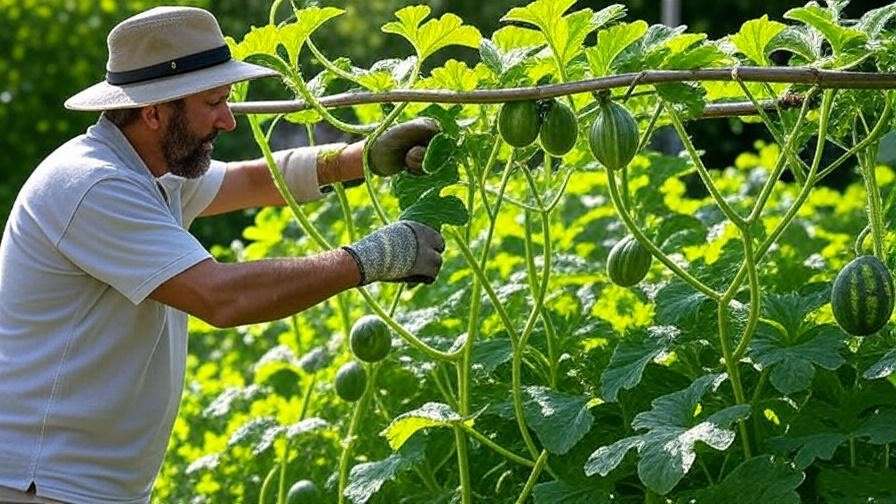
Pest and Disease Management
Pests and diseases can threaten your watermelon crop, but proactive management keeps them at bay. Common pests include aphids, cucumber beetles, and spider mites. Use neem oil or insecticidal soap for organic control, and plant marigolds nearby to deter pests naturally. Watch for diseases like powdery mildew (white patches on leaves) or fusarium wilt (wilting vines). Prevent these by ensuring proper spacing, avoiding overhead watering, and rotating crops. If issues persist, consult your local agricultural extension for region-specific advice.
Pollination and Fruit Development
Understanding Pollination Needs
The successful fruit set for Crimson Sweet watermelon relies heavily on pollination. These plants produce separate male and female flowers, requiring bees or other pollinators to transfer pollen. To attract pollinators, plant pollinator-friendly flowers like lavender or borage nearby. In areas with low bee activity, hand-pollination can ensure success. To hand-pollinate, use a small brush to transfer pollen from male flowers (with thin stalks) to female flowers (with a small bulb at the base). Signs of successful pollination include the female flower’s bulb swelling into a small watermelon within a few days. Expert Tip: Perform hand-pollination early in the morning when flowers are most receptive.
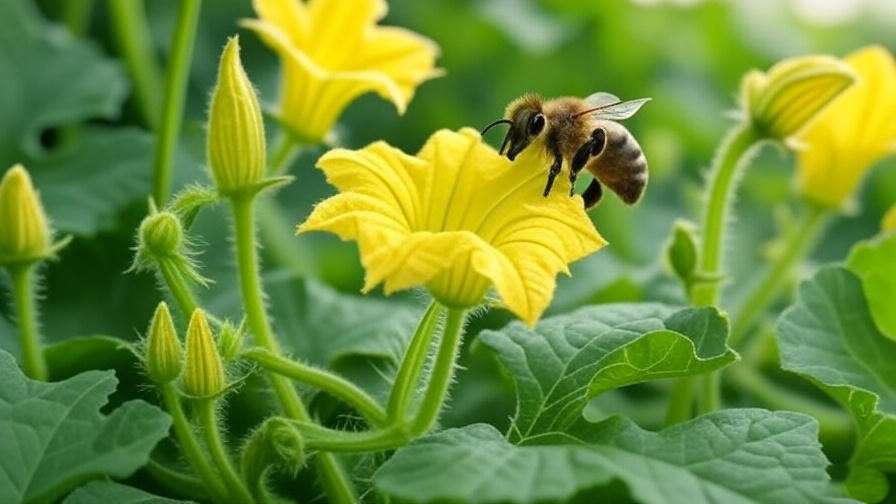
Supporting Fruit Growth
As Crimson Sweet watermelons develop, they need extra care to reach their full potential. Place straw, cardboard, or melon cradles under growing fruits to keep them off the soil, reducing the risk of rot and pest damage. Monitor fruit size—mature Crimson Sweet watermelons typically weigh 15–25 pounds and measure 10–12 inches long. Gently rotate melons every few days to ensure even ripening and prevent flat spots. During this stage, maintain consistent moisture and avoid sudden changes in watering to prevent fruit splitting.
Harvesting Crimson Sweet Watermelon
When to Harvest
Knowing when to harvest is crucial for enjoying the sweet, juicy flavor of Crimson Sweet watermelon. Look for these ripeness indicators: the underside (where the melon rests on the ground) turns creamy yellow, the rind takes on a dull, waxy appearance, and the fruit produces a hollow sound when tapped. The tendril closest to the fruit should be brown and dried. Typically, Crimson Sweet watermelons are ready 80–85 days after planting, depending on weather and growing conditions. Harvest too early, and the flesh will be pale and bland; too late, and it may become mealy.
Harvesting Techniques
To harvest, use a sharp knife or pruning shears to cut the stem about 2 inches above the fruit, taking care not to damage the vine or melon. Avoid twisting or pulling, as this can harm the plant or crack the fruit. Handle watermelons gently to prevent bruising. After harvesting, store them in a cool, shaded area (50–60°F) for up to 2–3 weeks. Expert Insight: If you’re harvesting multiple melons, prioritize those showing all ripeness signs to ensure peak flavor.
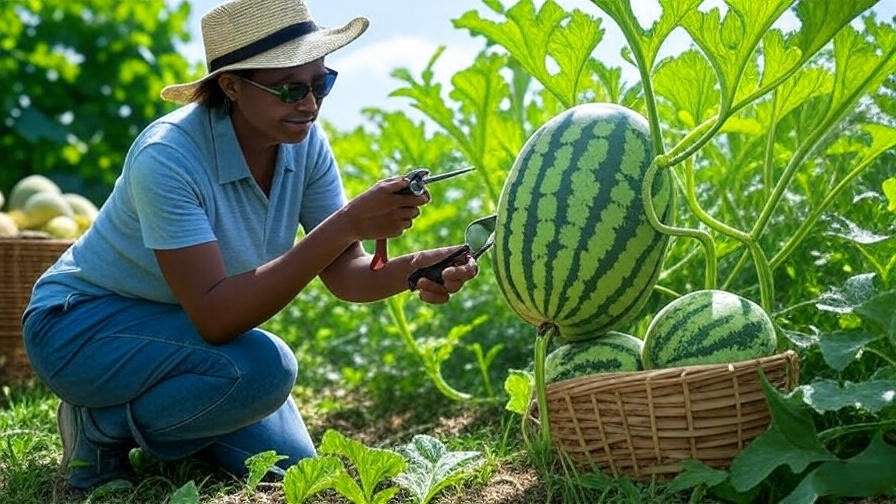
Post-Harvest Care and Storage
Storing Your Watermelons
Proper storage preserves the flavor and texture of Crimson Sweet watermelons. Store whole melons in a cool, dry place, ideally at 50–60°F, with good air circulation to prevent mold. Avoid refrigerating whole melons unless cut, as cold temperatures can degrade flavor. For cut melons, wrap tightly in plastic wrap and refrigerate for up to 5–7 days. For longer-term use, consider juicing or freezing the flesh in chunks for smoothies or desserts. Freezing retains flavor but may soften texture, so use frozen watermelon in blended recipes.
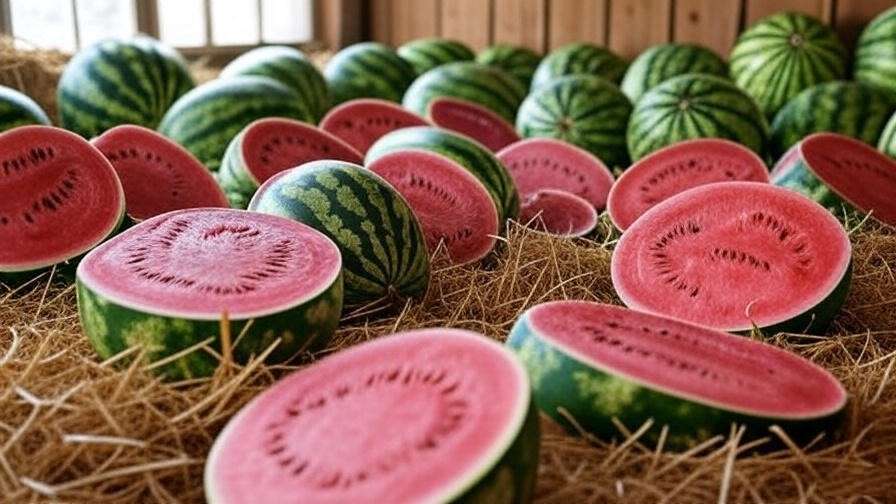
Saving Seeds for Future Planting
Saving seeds from your best Crimson Sweet watermelons is a cost-effective way to grow future crops. Select a fully ripe, healthy melon, cut it open, and scoop out the seeds. Rinse them thoroughly in a colander to remove pulp, then spread them on a paper towel to dry for 7–10 days in a warm, well-ventilated area. Store dried seeds in an airtight container in a cool, dark place. Properly stored seeds remain viable for up to 4–5 years. Benefit: Saving seeds ensures you can replicate your most successful plants, preserving traits like sweetness or size.
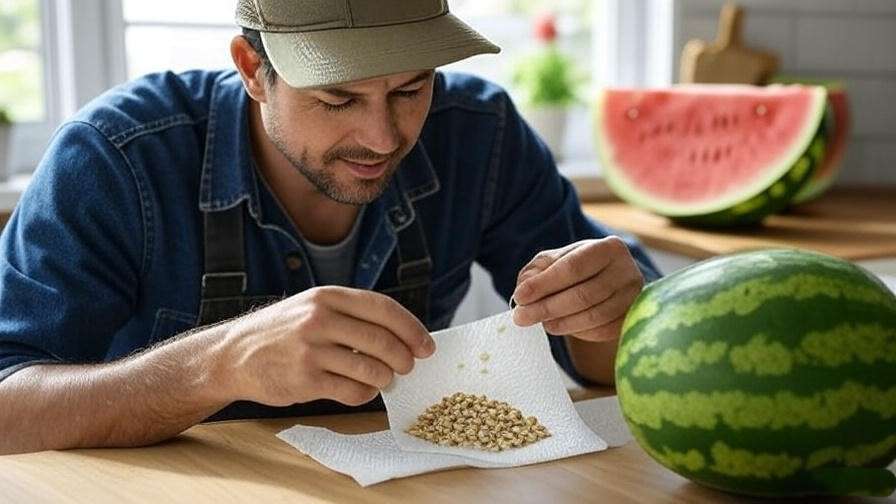
Troubleshooting Common Growing Issues
Even experienced gardeners encounter challenges. Below is a table summarizing common problems, symptoms, and solutions for Crimson Sweet watermelon:
| Problem | Symptoms | Solutions |
| Small fruits | Undersized melons, slow growth | Increase phosphorus fertilizer, ensure adequate water, check pollination success. |
| Wilting vines | Drooping leaves, yellowing | Check for overwatering or fusarium wilt; improve drainage and apply fungicide if needed. |
| Poor fruit set | Few or no melons forming | Enhance pollination with hand-pollination or attract bees with companion plants. |
| Pest damage | Chewed leaves, sticky residue | Use neem oil, introduce beneficial insects, or plant marigolds to deter pests. |
| Cracked fruits | Splits on melon rind | Maintain consistent watering to avoid sudden moisture fluctuations. |
For environmental stressors like heatwaves, provide temporary shade with row covers. During heavy rain, ensure proper drainage to prevent root issues. If problems persist, contact your local agricultural extension service for tailored advice.
Expert Tips for Maximizing Your Crimson Sweet Watermelon Yield
- Companion Planting: Pair watermelons with beans or corn to improve soil nitrogen and provide light shade. Avoid planting near potatoes, which compete for nutrients.
- Row Covers: Use lightweight row covers in early spring to protect young plants from frost or pests, removing them once flowering begins to allow pollination.
- Succession Planting: Stagger planting every 2–3 weeks for a continuous harvest throughout the season, especially in regions with long summers.
- Case Study: A Virginia gardener boosted their Crimson Sweet yield to 50 pounds by using black plastic mulch to warm the soil and trellising vines to save space, resulting in eight large, flavorful melons from two plants.
FAQs About Growing Crimson Sweet Watermelon
Q1: How long does it take for Crimson Sweet watermelon to ripen?
A: Crimson Sweet watermelons typically ripen 80–85 days after planting, depending on weather and care. Check for a yellow underside and hollow sound to confirm ripeness.
Q2: Can I grow Crimson Sweet watermelon in containers?
A: Yes, but use large containers (at least 20 gallons) with good drainage and a trellis for vine support. Choose compact varieties or prune vines to manage space.
Q3: What are the best companion plants for Crimson Sweet watermelon?
A: Marigolds, nasturtiums, and beans work well. Marigolds deter pests, while beans enrich the soil with nitrogen.
Q4: How do I know if my watermelon is overwatered?
A: Signs include yellowing leaves, soggy soil, or fruit splitting. Reduce watering and improve drainage to correct the issue.
Q5: Why are my watermelon vines not producing fruit?
A: Common causes include poor pollination, nutrient deficiencies, or insufficient sunlight. Hand-pollinate, fertilize appropriately, and ensure full sun exposure.
Conclusion
Growing Crimson Sweet watermelon is a rewarding journey that transforms your garden into a source of sweet, juicy summer delights. By following this guide—choosing the right location, preparing nutrient-rich soil, and mastering watering, pollination, and harvesting techniques—you’ll be well on your way to a bountiful harvest. Whether you’re savoring a slice fresh from the vine or sharing your homegrown melons with friends, the effort is worth it. Start planting today, and share your progress or questions in the comments below. For more plant care tips, explore our resources on soil health and organic gardening. Happy growing up!

